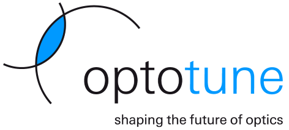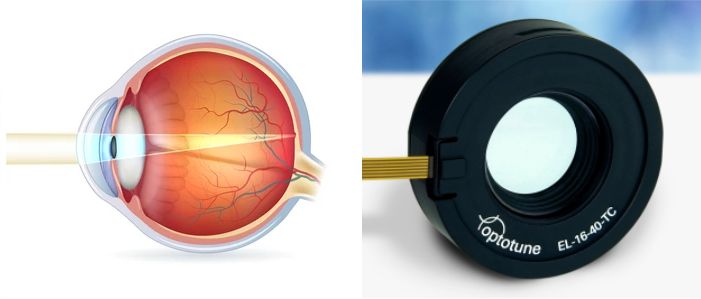The iToBoS project revolves around the use of artificial intelligence algorithms to analyse the images from the patient’s skin and give a comprehensive output to the doctors to help on their diagnostic.
This new tool should allow the doctors to detect early signs of melanoma and to follow the evolution of the skin lesions from visit to visit. However, to improve the currently used hand-held dermathoscopes, not only the analysis and reporting functions to be developed in the project are important. Another important goal is to create a full-body avatar of the patient with high-resolution images of the skin that renders obsolete the single pictures of local regions of the skin.
The optics challenge of the iToBoS project
With the current technology, doctors take low-resolution full-body pictures of their patients and tag the positions where the skin lesions are found in a 3D avatar. To analyse a specific lesion, they take a local high-resolution image with the hand-held dermathoscope which can be linked to that position. The goal of the full-body scanner is to take hundreds or thousands of high-resolution pictures covering the whole body of the patient in one go and create a full avatar in which the doctors can zoom in to see the details.
Due to safety reasons, the moving cameras of the scanner need to be placed at a long distance from the patient (several tens of centimetres). At those distances, the focal spot of the cameras is very small and features slightly closer or further from the camera are out-of-focus. Because our bodies have irregular shapes, the cameras of the full-body scanner need to take several pictures focused at different distances -a stack of images- and combine them so that all the elements in the region are in focus with the desired high resolution.
To be able to acquire all these stacks of images at every position in the body, the optical system needs to be very fast and flexible. Otherwise, the acquisition of a full-body avatar would take a very long time and the patient would have a very uncomfortable experience. The only solution to this problem are Optotune’s focus tunable liquid lenses and we are going to explain why.
Optotune AG, a leader in optics innovations
Optotune is a high technology Swiss company that develops and manufactures industry-shaping active optical components. Their goal is to allow customers around the globe to innovate in their fields through vision and acquisition systems not possible until now. It was founded in 2008 in the vicinity of Zürich, starting out with the core technology of focus tunable liquid lenses inspired by the working principle of the human eye. Later, laser speckle reducers, 2D mirrors, tunable prisms and beam shifters have been added to our tunable optics product lines. Thanks to their deep understanding of optics and mechanics and a passion for technology, Optotune is an ideal partner when it comes to solving challenges where conventional optics fail. This has been proven with a long list of collaborations and projects with some of the leading companies in a wide variety of fields such as machine vision, microscopy, laser processing, ophthalmology, image projection, AR/VR and automotive, to name a few. Now, Optotune is proud to participate in the iToBoS project where its expertise in Machine Vision can be applied to the early detection of cancerous skin lesions.

Optotune’s mission is to enhance people’s lives through innovation in dynamic light control and the iToBoS project is a perfect example of it
Focus tunable liquid lenses
So, what are focus tunable liquid lenses? Traditional optics are based on solid glass or plastic lenses, which are moved back and forth to focus or zoom. A very old but successful system, however, is completely different: the eye! It consists of an elastic lens material, which is bent in order to focus. Optotune has developed a series of lenses that basically copy the principle of the eye.

The working principle of Optotune’s focus tunable liquid lenses is based on the eye, where elastic materials are bent to adapt the shape of the “lens”.
Optotune’s focus tunable liquid lenses are shape-changing lenses based on a combination of optical fluids and a polymer membrane. The core element consists of a container, which is filled with an optical liquid and sealed off with a thin, elastic polymer membrane. A circular ring pushes the liquid onto the center of the membrane and deforming it. The deflection of the membrane and, with that, the radius of the lens surface can be changed affecting the optical power of the lens.
Advantages
A change in lens radius of several micrometers can have the same optical effect as moving the entire lens several centimeters. Focus tunable liquid lenses thus allow optical systems to be designed more compact and without complex mechanics. High throughput systems benefit from the fast response time of only a few milliseconds. The liquid lens principle guarantees reliable and durable operation avoiding the typical mechanical wear and tear, which allows for billions of cycles. System designs are more robust as they can be completely closed so that no dust can enter. Another advantage becomes obvious in production. The fact that less optical parts are moved combined with the tunability of the radius during operation results in reduced tolerance sensitivity and thus higher yield rates.
The five main advantages of focus tunable liquid lenses over traditional optics:
- Compact designs
- Fast response
- High reliability
- Robust system design
- Less tolerance sensitivity
Now, this technology will be put at work in the iToBoS project to equip the full-body scanner with the most flexible optics system possible.
Discover more about Optotune at https://www.optotune.com/
